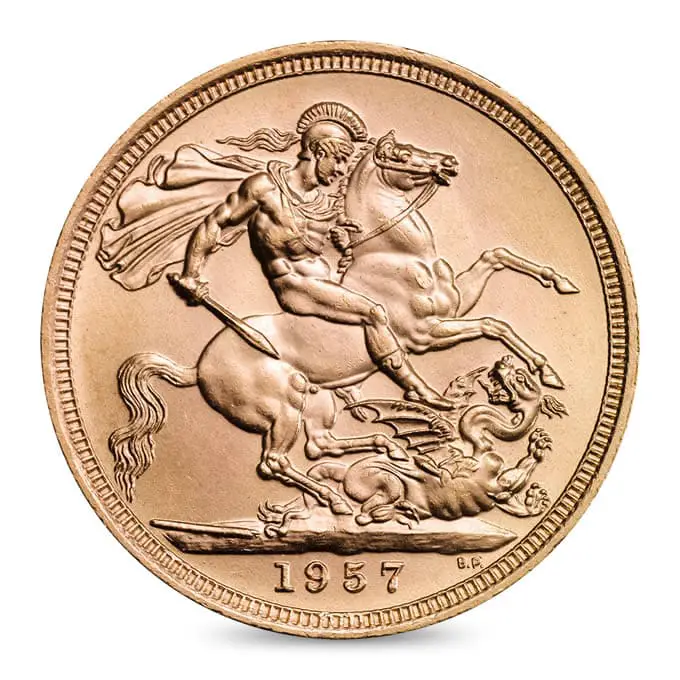Delving into what is a Sovereign coin reveals a treasure trove of history, dating back to 1489 during the reign of King Henry VII. This gold coin, known as the Sovereign, embodies over 500 years of Britain’s rich heritage and has cemented its status as The Royal Mint’s flagship product.
Embarking on this exploration, readers will uncover the evolution of the Sovereign’s design and minting process, its pivotal role in times of warfare and peace, and its enduring modern-day significance. This journey through time not only highlights the intrinsic bullion value of the Sovereign but also its remarkable numismatic collectibility, making it a coveted treasure worldwide.
The Historical Journey of The Sovereign
The sovereign coin, a symbol of stability and prestige, has a rich history that spans several centuries and monarchs. Initially struck in 1489 during Henry VII’s reign, it marked a new era of monetary stability after the tumultuous Wars of the Roses. This first gold Sovereign was the largest and most valuable gold coin ever minted in England at the time, embodying the nation’s newfound peace and prosperity.
The English Civil War and Beyond
During the English Civil War (1642-1651), both Royalists and Parliamentarians established their own mints to address the need for currency. Oversized silver pound coins and unique siege pieces emerged from besieged towns like Carlisle, showcasing coinage’s adaptability to political and economic circumstances.
The Modern Sovereign’s Genesis
In 1817, the modern gold Sovereign debuted with Benedetto Pistrucci’s iconic design of St George and the Dragon. This marked a significant aesthetic evolution, briefly interrupted by the crowned shield of the royal coat of arms from 1825 to 1830. St George and the Dragon’s return in 1871 solidified its association with the Sovereign.
Global Minting and Wartime Changes
Between the 1850s and 1932, Sovereigns were minted not only in England but also in colonial mints across the British Empire. World War I prompted their withdrawal from circulation, replaced by paper one pound notes. Only in 1953, during Elizabeth II’s coronation, were Sovereigns struck again, though not for circulation. This period underscores the Sovereign’s adaptability to global events and its enduring significance.
This journey through the Sovereign’s historical evolution reveals its significance not just as currency, but as a testament to the socio-political changes and challenges faced by England and later, the United Kingdom, over the centuries.
Design and Minting Evolution
The evolution of the Sovereign’s design and minting process is a testament to its enduring legacy and the meticulous craftsmanship that goes into each coin. Central to its design is the iconic imagery of St George slaying the dragon, a motif created by the Italian sculptor Benedetto Pistrucci. This design has graced the reverse of the coin since its modern inception in 1817, symbolizing valor and the triumph of good over evil. The obverse, meanwhile, has featured the likeness of the reigning monarch, capturing a piece of history with each change in sovereignty.
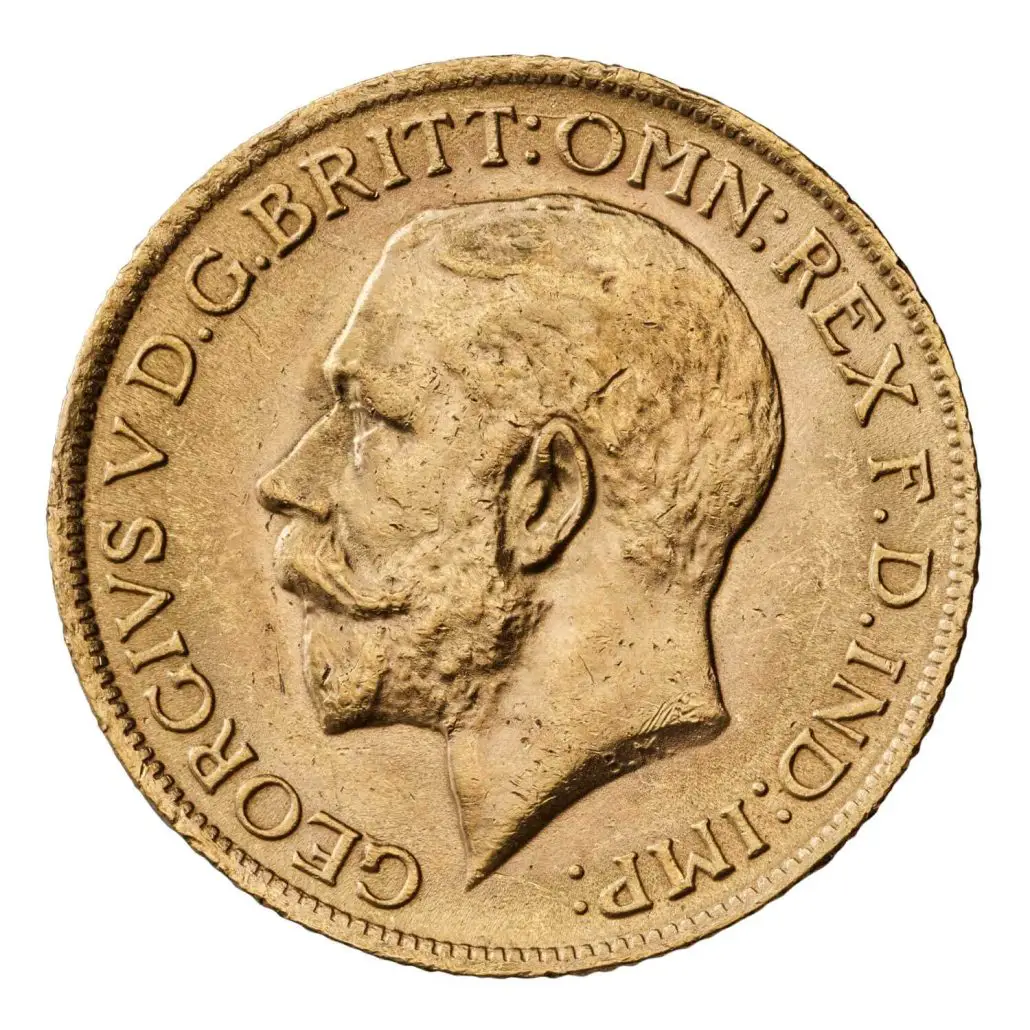
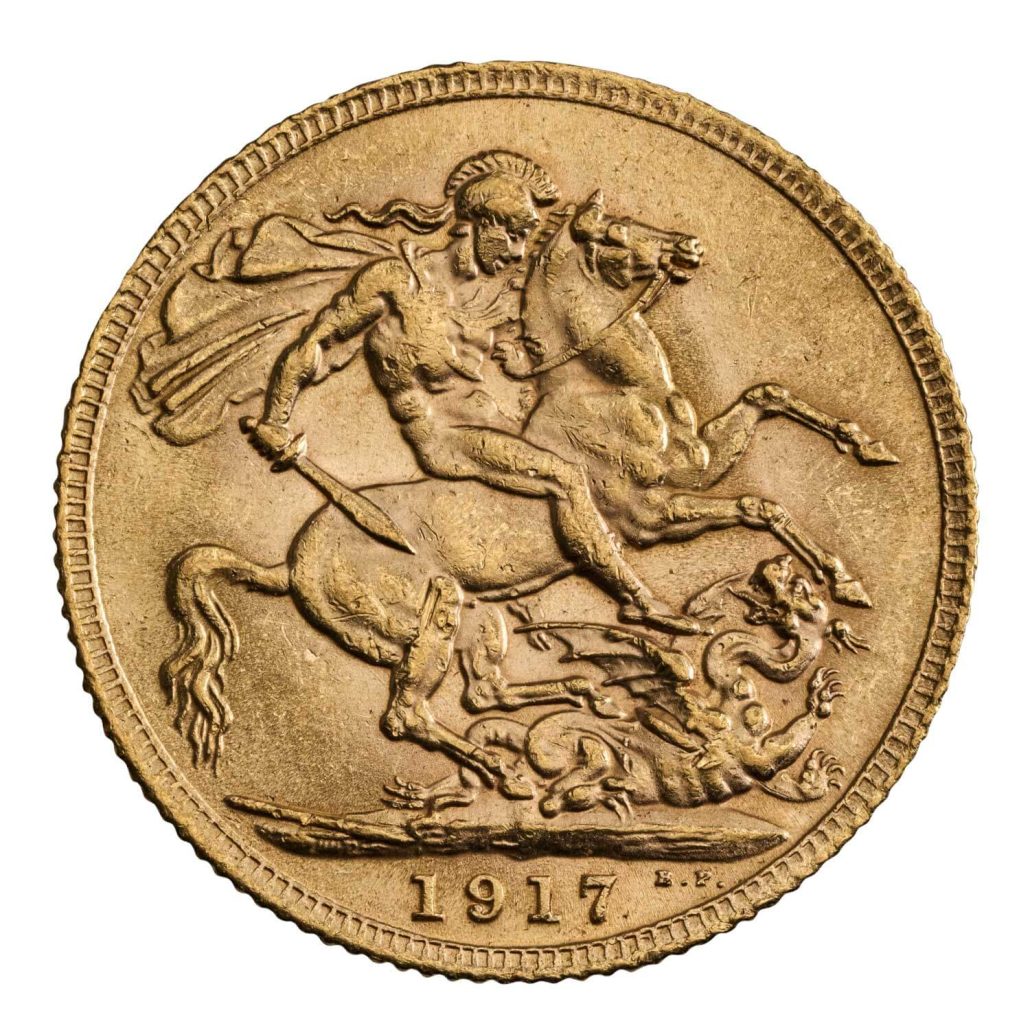
Mint Marks and Special Editions:
Notably, during the First World War, the Bombay mint struck Sovereigns bearing a distinctive ‘I’ mint mark, some finding their way into notable historical contexts such as being in the possession of Lawrence of Arabia. Over the years, the Sovereign has seen various commemorative designs, including special editions for the 500th anniversary of the Sovereign, the Golden Jubilee, the Diamond Jubilee, and the Platinum Jubilee, showcasing the coin’s adaptability and importance in marking significant national events.
Material and Measurements:
Consistently, the Sovereign has been minted in 22 carat gold, a testament to its enduring value and quality. The standard £1 Sovereign measures 22.05mm in diameter and 1.52mm in thickness, containing 7.315g of pure gold. This composition, blending gold with a small proportion of copper, ensures both the coin’s durability and its distinctive luster. The Sovereign is available in various sizes, including 5 pounds, 2 pounds, half sovereign, and quarter sovereign, catering to different collectors’ preferences and investment scales.
The design of the Sovereign, while largely unchanged, has seen variations to reflect the times and the monarchs. The reverse design’s consistency, featuring Pistrucci’s St George and the Dragon, alongside the evolving obverse portraits of successive British monarchs, encapsulates the Sovereign’s role as a piece of living history. This blend of tradition and adaptability underscores the Sovereign’s status as a symbol of the highest standards of coin making, cherished by collectors and investors alike.
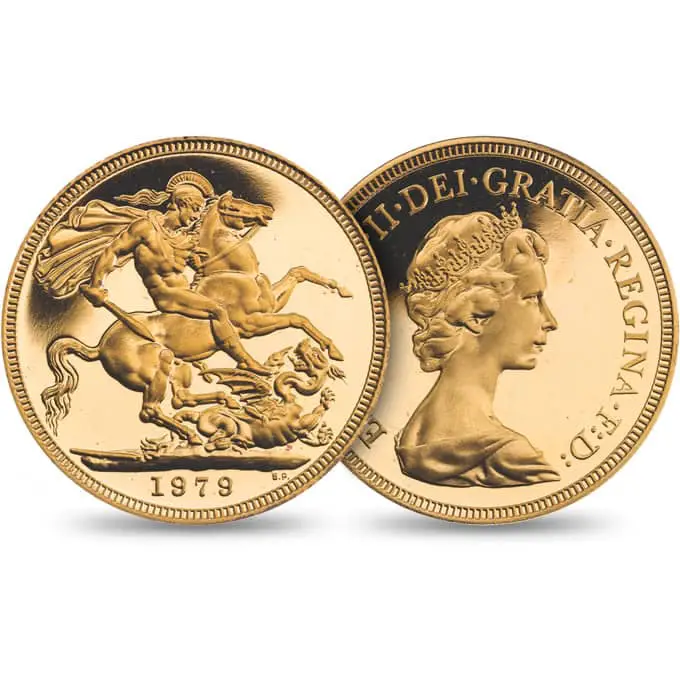
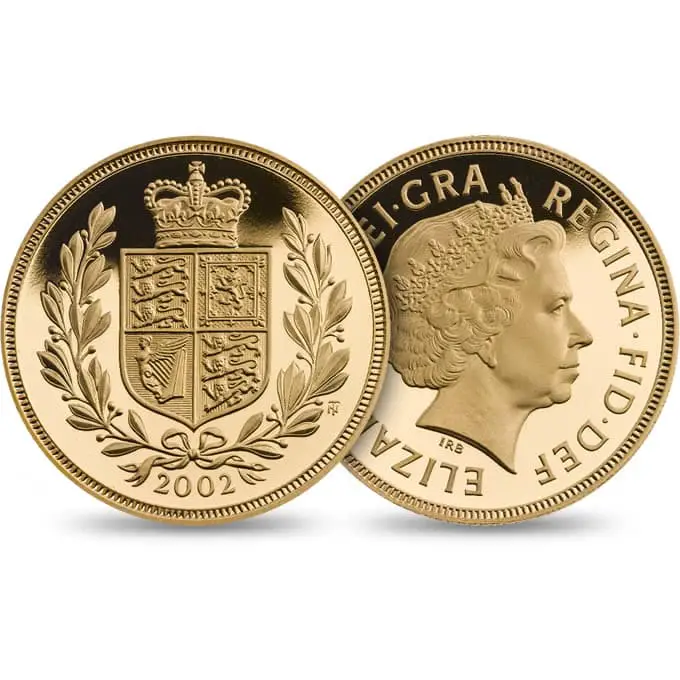
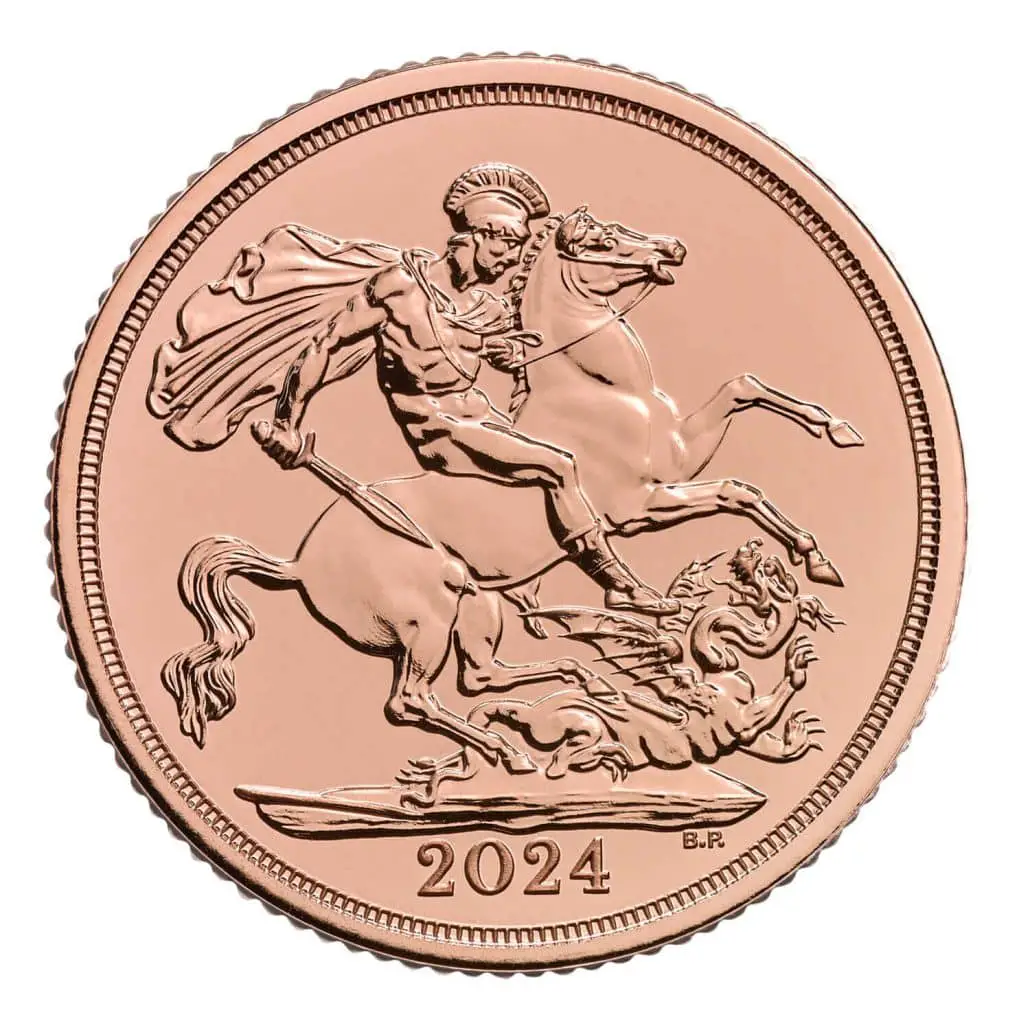
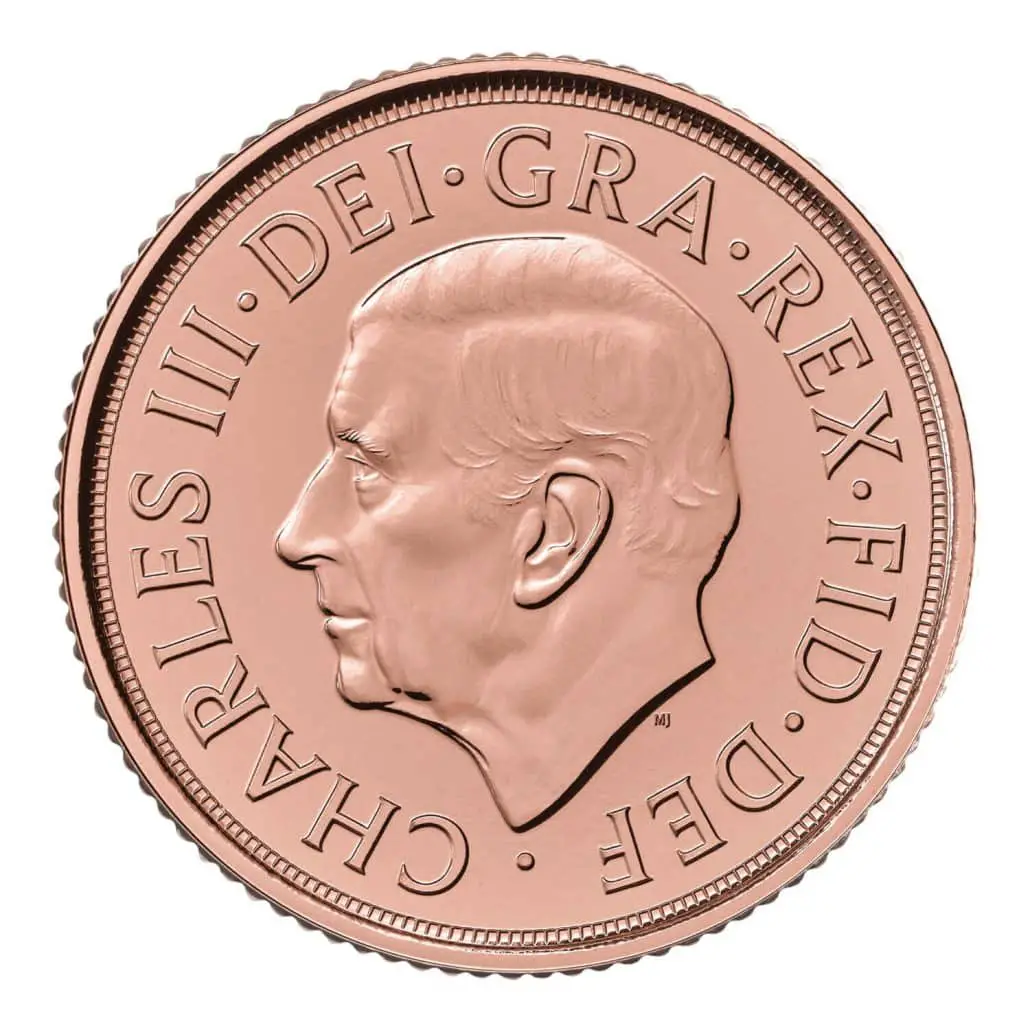
The Sovereign in Warfare and Peace
In the annals of history, the Sovereign has not only been a symbol of economic stability but also a vital asset in times of conflict and peace. Its role has evolved, adapting to the needs of the times, from a mere currency to a tool of survival and diplomacy.
Survival and Espionage During Wars:
In the First Gulf War, British military personnel were equipped with Gold Sovereigns in their survival kits, a practice dating back to World War II when SOE agents also carried these coins for emergencies.
The utility of the Sovereign in such dire situations underscores its value beyond mere currency, serving as a universally recognized medium for securing aid or passage.
International Monetary Contributions:
During World War II, the United States played a crucial role in supporting the monetary systems of over twenty allied nations. This included minting Franc coins for the French Committee of Liberation and coins for a liberated Ethiopia, illustrating the global impact and recognition of coinage in maintaining economic stability and sovereignty during tumultuous times.
Post-War Trade and Collectibility:
Following World War II, the Sovereign found a new life as a trade coin in the Middle East and beyond, further cementing its status as a global currency.
Its transition to a coveted item for investors and collectors in the UK and worldwide highlights the Sovereign’s enduring appeal. Today, it stands as one of the UK’s most popular bullion coins, cherished not only for its gold content but also for its historical significance and connection to the monarchy. This dual role enhances its allure, making it a prized possession for those who value both its material worth and its rich heritage.
The incorporation of the Sovereign in jewelry also speaks to its cultural significance, blending utility with artistry.
This multifaceted history of the Sovereign, spanning warfare and peace, trade, and collectibility, showcases its enduring legacy and adaptability. Its journey from a vital survival tool to a cherished collector’s item illustrates the evolving relationship between currency and society.
The Sovereign’s Modern-Day Significance
In the modern era, the Sovereign has transcended its original role as a circulating medium of exchange to become a cornerstone in the portfolios of collectors and investors alike. Its evolution reflects a broader narrative of adaptation and enduring value, underscored by the following key attributes:
- Investment Appeal and Tax Efficiency:
- Liquidity: Sovereign coins are highly liquid, easily bought, and sold in the global market.
- Tax Benefits: Exemption from VAT and Capital Gains Tax makes them an attractive investment in the UK.
- Collectability and Numismatic Value:
- Rare Finds: Coins like the George III and Edward VIII Sovereigns are exceptionally sought after, fetching substantial sums at auctions.
- Variety: The 2021 Sovereign family offers a range of sizes, from Quarter-Sovereign to Five-Sovereign Piece, catering to diverse collector interests.
- Historic Coins: Pre-1604 Sovereigns, due to their scarcity, and post-1604 rare issues are highly prized among numismatists.
- Practical Considerations:
- Material and Dimensions: Made from 22-carat gold, each coin contains 0.2354 troy oz of pure gold, offering a tangible asset with intrinsic value.
- Legal Tender Status: As legal tender in the UK, Sovereigns hold a nominal value of one pound sterling, yet their market value is significantly higher due to gold content and collectability.
The Sovereign’s modern-day significance is a testament to its adaptability and the enduring allure of gold as a symbol of wealth and stability. Its journey from a widely circulated currency to a cherished investment and collector’s item mirrors the shifting landscapes of economics, politics, and culture. As such, the Sovereign remains a pivotal element in the narrative of British and global numismatics, offering both tangible value and a connection to a rich historical tapestry.
